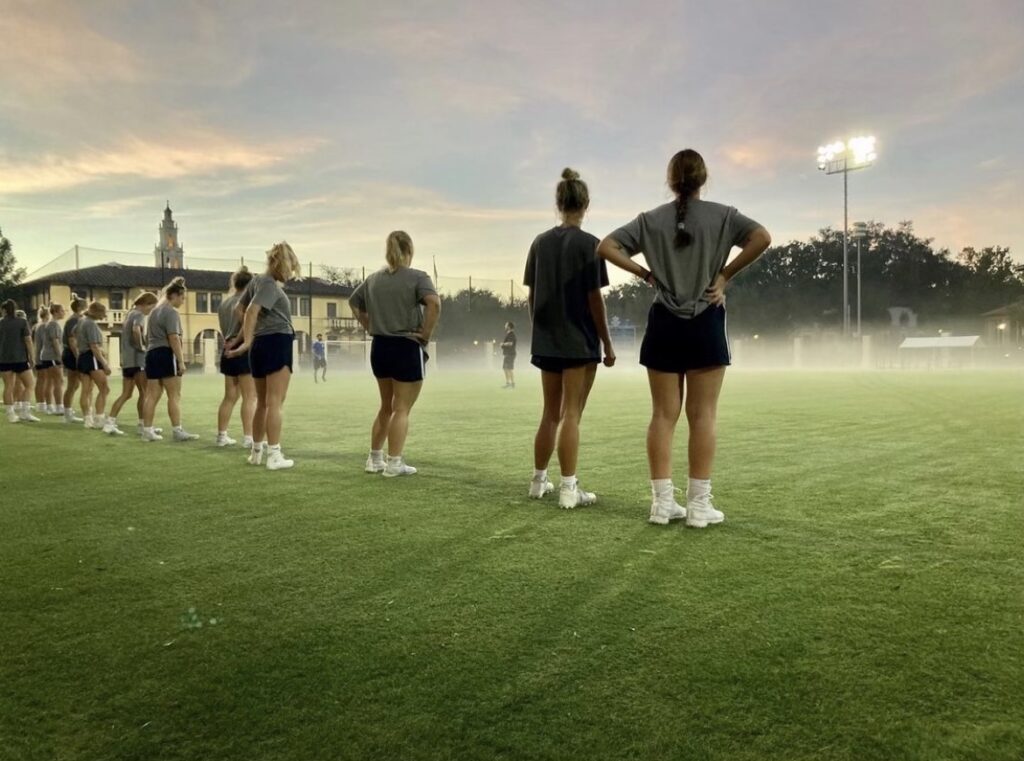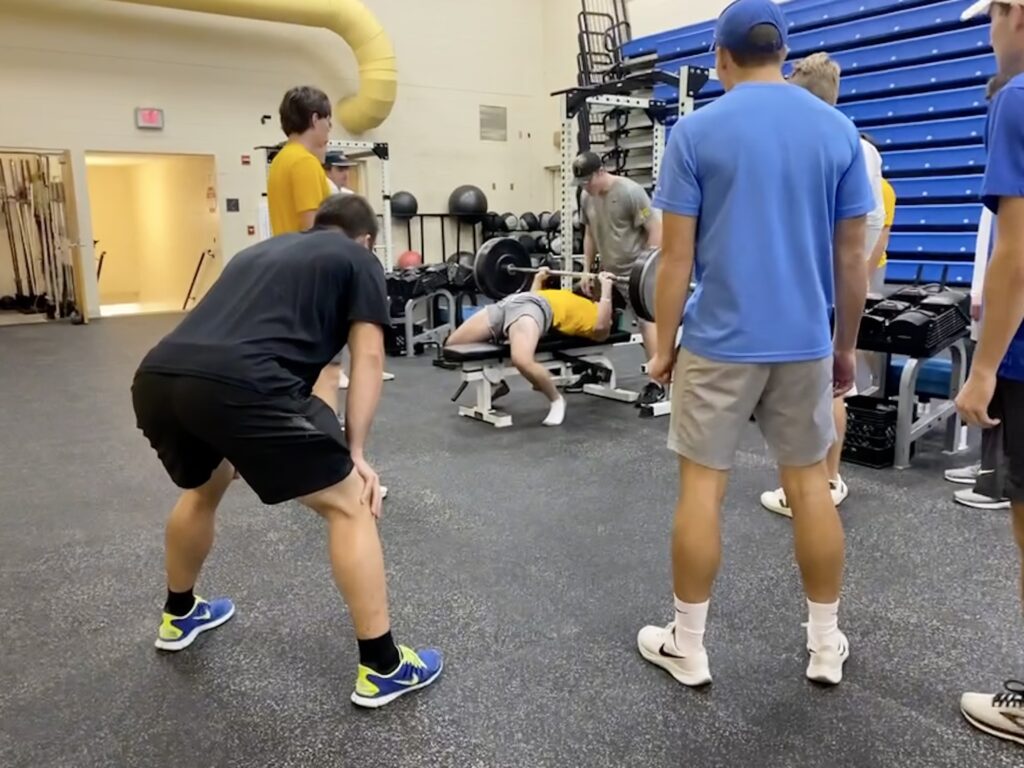
COLLEGE LACROSSE OFF-SEASON
MORE THAN A WEIGHT ROOM
By Bobby O’Mullan
_______________________
The off-season is an exciting time of year.
It’s full of potential and opportunities for athletes to improve. In this stretch of the year, there’s no pressure to strategize and be fresh for multiple games per week. There’s time to slow things down, sharpen athletes’ skills, and improve their physical outputs. As sports performance coaches, this is when our time with the athletes is prioritized, and we can push the envelope of training.
The typical off-season for most sports includes challenging sessions in the weight room. That usually means a heavy dose of back squats and power cleans. However, unless you’re coaching weightlifters or powerlifters, the team’s wins and losses next season will not be dictated by their ability to squat more weight. Games will be won and lost based on their ability to execute tactics and skills on the field at a high level. With that framework, the success of a sports performance coach’s job in the off-season mostly falls within improving an athlete’s physical capabilities and resiliency as it relates to the execution of their sports skills. Some of that of course lies within getting stronger in the weight room. However, greater importance falls upon them becoming better movers. This includes moving at faster speeds, dropping into better angles for acceleration, getting in and out of cuts faster, reading and anticipating other’s movements, and knowing how to leverage one’s positioning against an opponent.
_______________________
The Rollins College Men’s and Women’s Lacrosse teams attacked this past off-season with a balanced approach.
They performed two weight room sessions per week along with two movement sessions out on the field per week. The weight room sessions included things you’d expect out of most programs. There were heavy squats, lunges, presses, pulls, unilateral exercises, and prehab work. The real magic is what happened during our movement sessions. The two days per week out on the field were split up into one linear movement day and one change of direction day.
On the linear day, we cycled between short accelerations, curvilinear accelerations, and top speed work each week. Every fourth week we tested our progress with ten-yard starts and flying ten-yard sprints using a 30yd build-up. The monthly testing gave the athletes a routine chance to see the measurable progress they were making through their hard work. It also provided motivation in the subsequent weeks to train harder to see greater improvement on the next test day.
On the change of direction day, we cycled between 180-degree cuts, curvilinear change of direction, and 45-degree cuts. In comparison to the linear day, our change of direction training was higher in volume but performed at a lower intensity. Since the drills revolved around the athletes accelerating and decelerating in and out of cuts, they were never able to get up to a relatively maximal speed. The lower maximal speed meant shorter required rest intervals and more frequent repetitions. This created an optimal environment to engrain proper mechanics. The lower speeds allowed for the athletes to focus on their positioning and the higher reps helped “groove” the neural pathways of those motor skills.
Potentially the most important part of each day was the final “Compete” segment. During that time the athletes were given a chance to compete in 1v1, 2v1, 2v2, or free for all environments. The competition was always designed in a way to provide the athletes an opportunity to use some of the skills and techniques they worked on earlier. For example, if it was a curvilinear change of direction day, the competition may have been sprint relays out and back around a half-circle. If it was a 45-degree cut day, the competition may have been a 1v1 two-hand touch drill. In any scenario, there were never instructions on what technique to use or coaching cues about proper form. It was just about competing. Find a way to win with the rules provided. As a sports performance coach, it was an excellent time to see what techniques naturally transferred over to live competition, and which needed more work. Running through ladders and around cones efficiently means nothing if you look like a newborn giraffe against an opponent.
By the end of the semester, the athletes’ acceleration times and top speeds all improved. Their vertical jump height and weight room numbers went up. Most importantly, they noted moving seamlessly and with more power at practice. Now they have the tools to perform at a significantly higher level in-season this spring.
| Front Squat (3RM) | Trap Bar Deadlift | Vertical Jump | 10-Yard Sprint | Top Speed | |
|---|---|---|---|---|---|
| Initial Average | 115lbs | 210lbs | 18.7″ | 1.78 | 16.0mph |
| Final Average | 125lbs | 220lbs | 20.8″ | 1.75 | 16.5mph |
| Best | 155lbs | 315lbs | 25.1″ | 1.65 | 18.9mph |
| Front Squat (3RM) | Reverse Lunge | Vertical Jump | 10-Yard Sprint | Top Speed | |
|---|---|---|---|---|---|
| Initial Average | 215lbs | 230lbs | 26.3″ | 1.60 | 19.1mph |
| Final Average | 230lbs | 250lbs | 28.6″ | 1.57 | 20.0mph |
| Best | 315lbs | 335lbs | 38.1″ | 1.42 | 22.7mph |

Leave a Reply